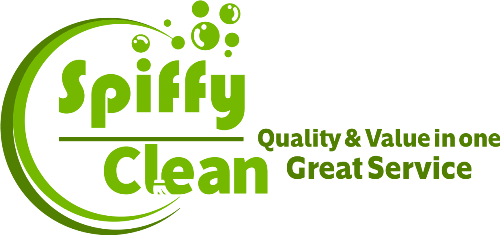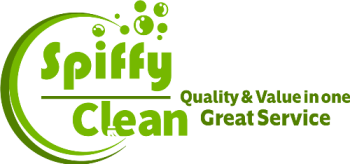Commercial Cleaning 101: Understanding the Science of Disinfection
Welcome to Spiffy Clean, where we unravel the secrets behind maintaining a clean and hygienic business space. In the ever-evolving landscape of commercial cleaning, understanding the science of disinfection is crucial for creating a safe and healthy environment. In this comprehensive guide, we’ll break down the complexities, explore effective methods, and highlight the significance of embracing science in commercial cleaning practices.
The Importance of Commercial Cleaning
Before delving into the science of disinfection, let’s emphasize the critical role of commercial cleaning in various aspects of business operations.
-
Employee Health and Productivity:
-
- A clean workspace contributes to the health and well-being of employees. A hygienic environment reduces the risk of illnesses, promoting a more productive and positive atmosphere.
-
Customer Impressions:
-
- First impressions matter in business. A clean and well-maintained establishment creates a positive image, instilling confidence in clients and customers.
-
Regulatory Compliance:
-
- Adherence to health and safety regulations is not only a legal obligation but also an ethical responsibility. Compliance ensures a secure environment for everyone within the business premises.
Understanding the Science of Disinfection
- Differentiating Cleaning, Sanitizing, and Disinfecting:
-
- Cleaning: Involves removing visible dirt, dust, and debris. It enhances the aesthetic appeal of surfaces but may not eliminate all germs.
-
- Sanitizing: Reduces the number of bacteria on surfaces to a safe level, minimizing the risk of infection.
-
- Disinfecting: Takes sanitization a step further by eliminating or inactivating a broader spectrum of microorganisms, including viruses and fungi.
-
Types of Disinfectants:
-
- Alcohol-Based Disinfectants: Effective against a wide range of bacteria and viruses, alcohol disrupts cell membranes, leading to microorganism destruction.
-
- Quaternary Ammonium Compounds (Quats): Commonly used in healthcare settings, Quats disrupt cell membranes and proteins, providing effective disinfection.
-
- Hydrogen Peroxide: An environmentally friendly option, hydrogen peroxide acts as an oxidizing agent, damaging the cell walls of bacteria and viruses.
-
- Bleach (Sodium Hypochlorite): A potent disinfectant, bleach releases chlorine to oxidize and destroy microorganisms. Caution is advised due to its corrosive nature.
-
Contact Time and Surface Preparation:
-
- The effectiveness of disinfection relies on factors such as contact time and proper surface preparation.
-
- Contact Time: The duration a disinfectant must remain wet on a surface to effectively eliminate or inactivate microorganisms. Following manufacturer instructions is crucial for optimal disinfection.
-
- Surface Preparation: Thoroughly cleaning surfaces before applying disinfectants ensures their efficacy. Removing dirt and debris allows disinfectants to work more effectively.
-
High-Touch Surfaces and Critical Control Points:
-
- Offices have specific high-touch surfaces or critical control points that demand special attention during the cleaning and disinfection process. Examples include doorknobs, light switches, elevator buttons, shared electronic devices, and kitchen areas. Diligence in cleaning these areas helps minimize the risk of cross-contamination.
Innovations in Commercial Cleaning Technology
Advancements in technology have significantly influenced the commercial cleaning industry, introducing innovative tools to enhance efficiency and effectiveness.
- Electrostatic Sprayers:
-
- These devices use electrostatic technology to charge disinfectant particles, ensuring even coverage on all surfaces. Ideal for large office spaces, these sprayers provide a quick and thorough disinfection process, reaching hard-to-access areas.
- UV-C Light Disinfection:
-
- UV-C light has proven efficacy in killing microorganisms by damaging their DNA or RNA. UV-C light disinfection systems utilize ultraviolet light to destroy pathogens, making them an effective addition to office cleaning practices.
- Internet of Things (IoT) Sensors:
-
- IoT sensors integrated into cleaning equipment and facilities offer real-time data on the cleanliness of office spaces. This data-driven approach enhances the efficiency of cleaning operations, ensuring resources are allocated where needed most.
Best Practices for Commercial Cleaning
Implementing effective commercial cleaning practices requires a strategic combination of the right products, techniques, and strategies. Here are some best practices to consider:
- Develop a Comprehensive Cleaning Plan:
-
- Create a detailed cleaning plan specific to office spaces. Clearly outline the frequency of cleaning tasks, types of cleaning products to be used, and the responsibilities of cleaning staff. A well-structured plan ensures consistent and thorough cleaning throughout the office.
- Provide Specialized Training for Office Cleaning Staff:
-
- Office cleaning staff should receive specialized training to understand the nuances of office cleaning and the science of disinfection. Regular training sessions keep staff informed about the latest industry trends and best practices in commercial cleaning, enhancing their expertise.
- Select the Right Cleaning Products for Office Spaces:
-
- Choosing the right cleaning products is crucial for effective disinfection in an office setting. Consider factors such as the types of pathogens present, the nature of office surfaces, and any specific requirements for commercial spaces. Following manufacturer instructions for product use is essential.
- Prioritize High-Touch Surfaces in Offices:
-
- Given the high traffic in office spaces, special attention should be given to high-touch surfaces during the cleaning and disinfection process. Develop a routine for frequent cleaning of surfaces such as doorknobs, light switches, shared equipment, and common areas to minimize the risk of cross-contamination.
- Regularly Evaluate and Update Cleaning Protocols:
-
- The commercial cleaning industry is dynamic, with new products and technologies continuously emerging. Regularly evaluate and update office cleaning protocols to incorporate the latest advancements and industry best practices. This ensures that your office cleaning practices remain effective and up-to-date.
Conclusion
In the world of commercial cleaning, mastering the science of disinfection is essential for creating a safe and healthy office environment. From understanding the distinctions between cleaning, sanitizing, and disinfecting to incorporating innovative technologies, businesses can implement effective office cleaning practices. Prioritizing employee health, ensuring customer satisfaction, and complying with health and safety regulations are central to the success of any business. By embracing the science of disinfection and staying abreast of industry advancements, businesses can create workplaces that are not only clean but also contribute to the overall success and reputation of the organization. Commercial cleaning is more than just a routine – it’s a commitment to creating spaces where everyone can thrive.






